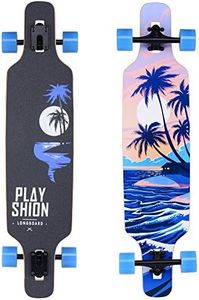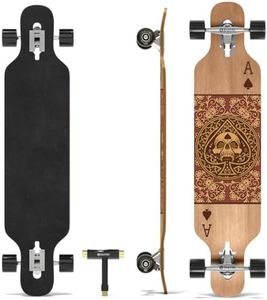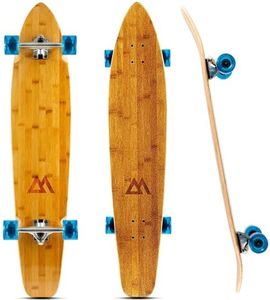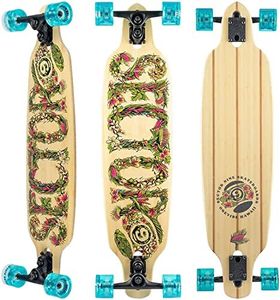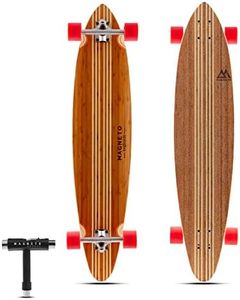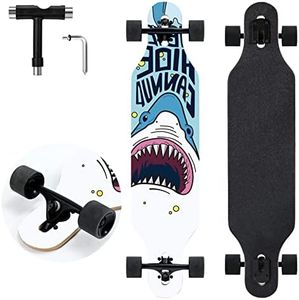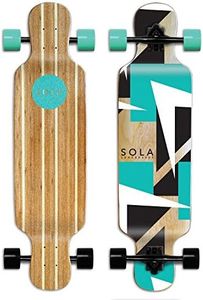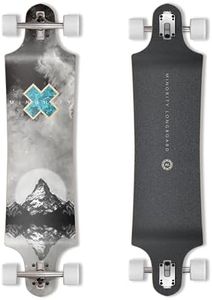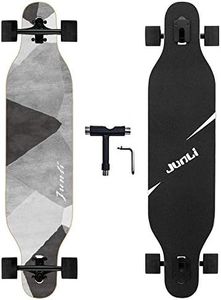We Use CookiesWe use cookies to enhance the security, performance,
functionality and for analytical and promotional activities. By continuing to browse this site you
are agreeing to our privacy policy
10 Best Longboards For Beginners
From leading brands and best sellers available on the web.By clicking on a link to a third party's website, log data is shared with that third party.
Buying Guide for the Best Longboards For Beginners
Choosing a longboard as a beginner is an exciting step toward learning how to ride. The key is to select a longboard that matches your riding style, comfort level, and where you plan to ride (smooth pavement, rough roads, or indoors). Beginners should prioritize stability, ease of control, and comfort. Understanding longboard features will help you make the right decision and enjoy your learning experience.Deck ShapeThe deck shape refers to the outline and profile of the longboard, which impacts stability and maneuverability. For beginners, the most common and recommended shapes are pintail and cruiser shapes. Pintails have a wider belly and a tapered tail, making them easy to control and very stable, ideal for cruising. Cruisers are also forgiving and versatile. Other shapes, like drop-throughs or double kicks, offer different experiences but can be trickier for new riders. If your main goal is to learn to ride smoothly and comfortably, start with a pintail or cruiser deck.
Deck LengthDeck length is measured in inches from nose to tail and plays a major role in how stable and easy to control the longboard is. Shorter decks (under 36 inches) are more maneuverable and great for tricks but can be less stable at speed—a challenge for beginners. Medium decks (36–42 inches) strike a balance between stability and easy turning, making them a popular choice for new riders. Longer decks (over 42 inches) offer the most stability and are great for cruising or downhill riding but may be harder to carry or store. If stability is your priority, lean toward decks in the medium to longer range.
Deck FlexDeck flex means how much the longboard bends under weight. Flexy decks absorb road bumps and are more comfortable for gentle rides but can feel less stable when going fast. Stiff decks don’t flex much and provide better stability at higher speeds but less shock absorption. For beginners mostly riding on flat surfaces, a medium flex is often best—it offers comfort and a bit of forgiveness without feeling too wobbly or unstable.
Wheel Size and HardnessWheels come in various diameters and hardness levels, both of which affect your ride. Larger wheels (typically 70mm or bigger) roll over cracks and bumps easier, perfect for learning and cruising. Smaller wheels are more for tricks and technical riding. Hardness is rated on the durometer scale: softer wheels (lower numbers, like 78A–83A) grip the road, offer a smoother ride, and are best for beginners. Harder wheels (above 86A) slide more easily and are for more advanced riders. For new riders, pick larger and softer wheels to maximize comfort and control.
TrucksTrucks are the metal parts that attach the wheels to the deck. Wider trucks provide more stability, while narrower ones make turning easier but can feel twitchier for beginners. Trucks also come in different mounting styles, like top-mount and drop-through. Drop-through trucks lower the ride height for extra stability and easier pushing, making them a good choice for beginners. When choosing trucks, look for models that match your deck width and favor stability over quick turning at first.
Grip TapeGrip tape is the gritty sheet applied to the top of the deck for traction. It prevents your feet from slipping, which is crucial for beginners getting used to balance. Most longboards come pre-equipped with grip tape, and for a beginner, standard grip is perfect—it keeps you secure without being too aggressive.
